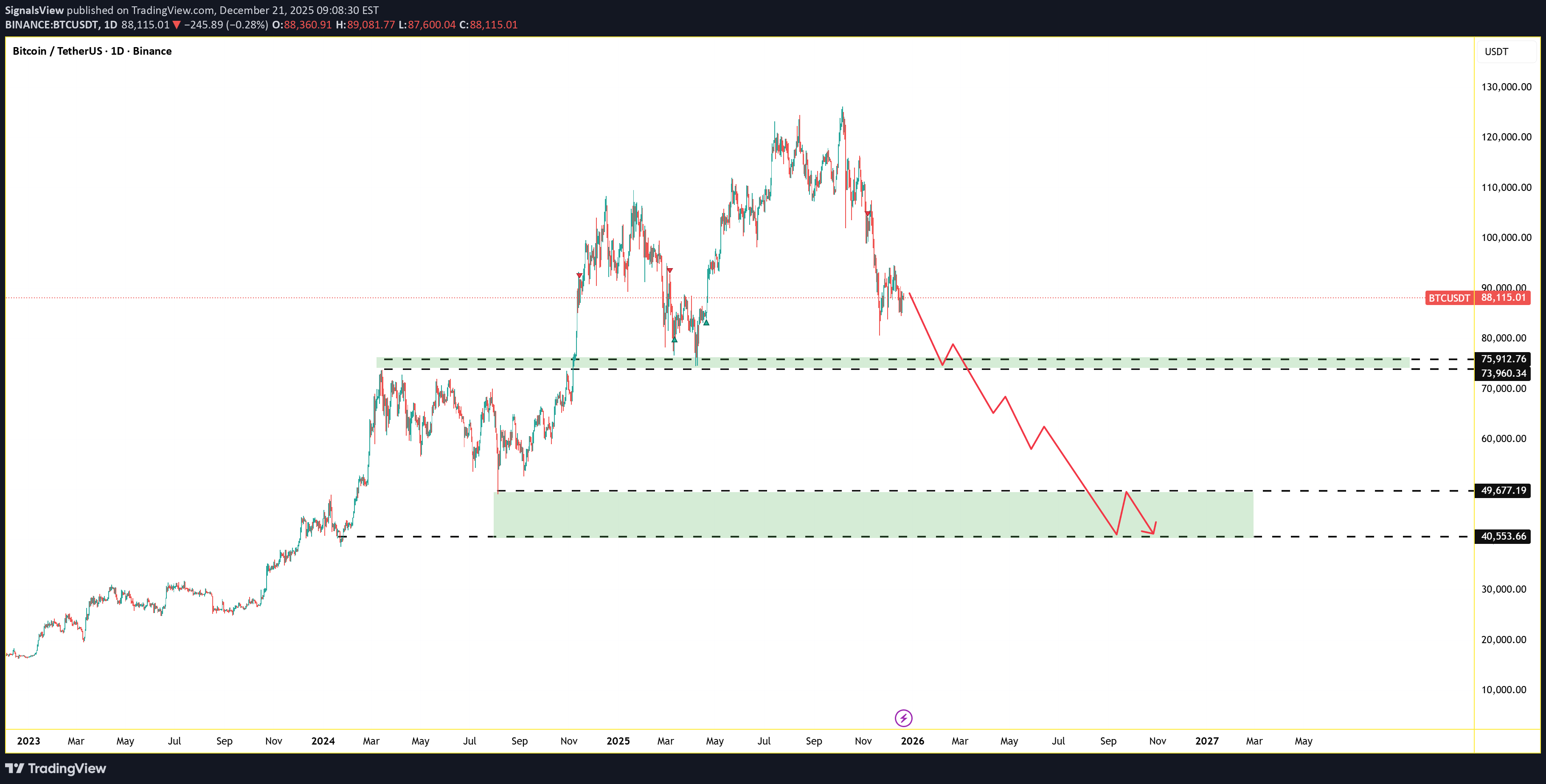
BTC
Bitcoin
| تریدر | نوع سیگنال | حد سود/ضرر | زمان انتشار | مشاهده پیام |
|---|---|---|---|---|
 alirezakSıralama: 80 | خرید | حد سود: ۱۰۸٬۰۰۰ حد ضرر: تعیین نشده | 06.12.2025 | |
 TradingHub_FX_cryptoSıralama: 499 | فروش | حد سود: تعیین نشده حد ضرر: تعیین نشده | 2 saat önce | |
AliTeslaSıralama: 464 | فروش | حد سود: تعیین نشده حد ضرر: تعیین نشده | 10 saat önce | |
 EduwaveTradingSıralama: 3 | خرید | حد سود: تعیین نشده حد ضرر: تعیین نشده | 21 saat önce | |
 RLindaSıralama: 44 | فروش | حد سود: تعیین نشده حد ضرر: تعیین نشده | 23 saat önce |
Bitcoin Fiyat Grafiği
سود Üç Ay :
خلاصه سیگنالهای Bitcoin
سیگنالهای Bitcoin
filtre
Mesajı şuna göre sırala
Tüccar Türü
timeframe

SignalsView

ydnldn
NLDN | BTCUSDT PERPETUAL
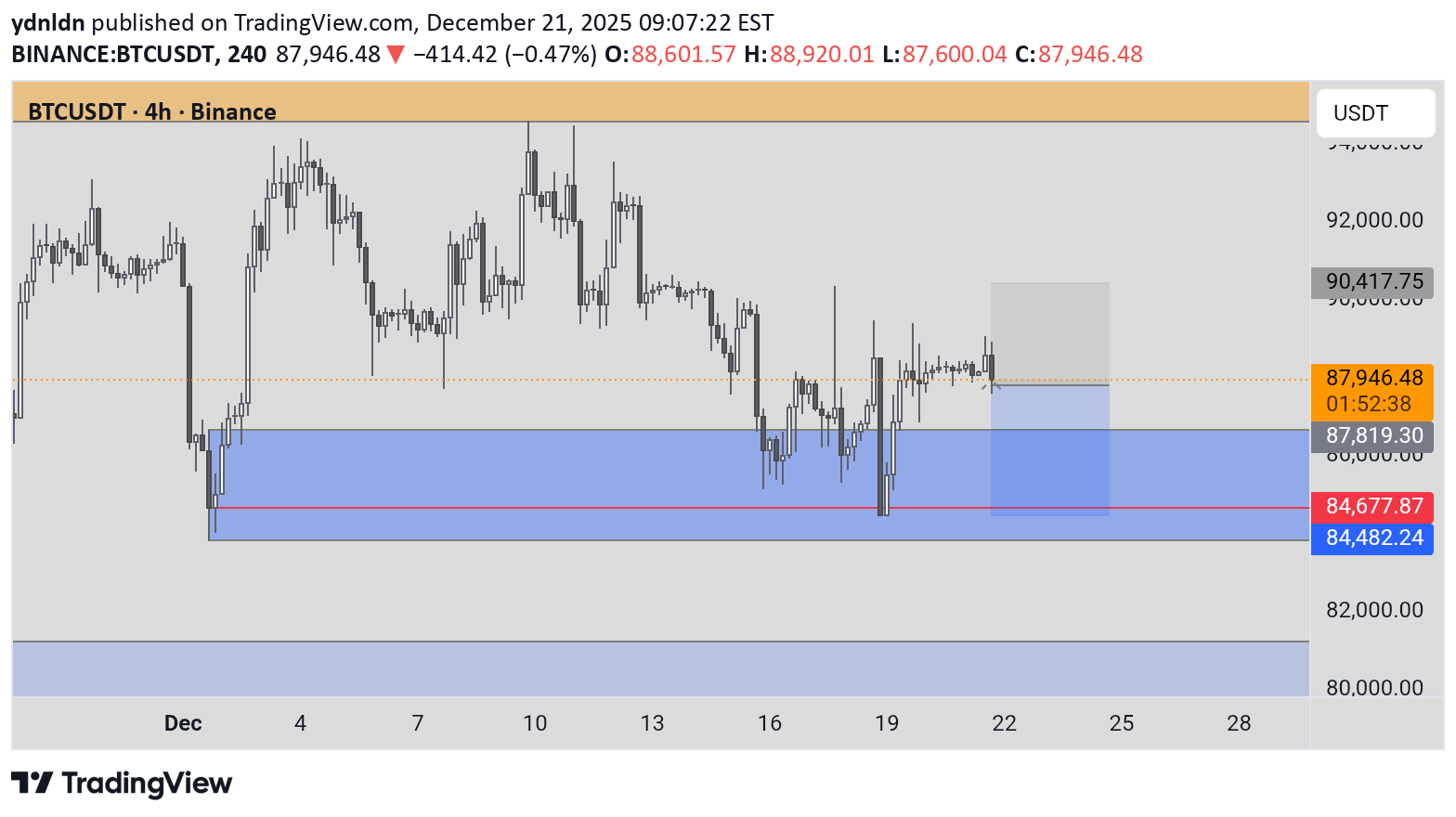
BTCUSDT 📉 4 Saat Sürekli KISA Giriş 87.800 SL 90.417 TP 84.482 Bu analizi anlayışlı bulursanız sizi beğenmeye veya yorum bırakmaya davet ediyorum. Yapıcı geribildirim ve öneriler büyük beğeni topluyor. Daha fazla analiz için lütfen beni takip edin @ydnldn.

Actualjustice
BTCUSDT – Long Bias (Coming Week)

Bitcoin şu anda düzeltici bir hareketin ardından indirimli bir aralıkta işlem görüyor ve fiyat önceki talep bölgeleri civarında tepki veriyor. Likiditenin alındığı ve piyasa yapısının potansiyel bir tersine dönüşe işaret ettiği, vurgulanan düşük alım alanlarından uzun fırsatlar arıyorum. Beklenti, fiyatın form bir tabana ulaşması ve orta aralığa doğru yükselmesi, ilk move satış bölgesine doğru ilerlemesi ve muhtemelen üst likidite ve kar alma alanına doğru devam etmesi yönünde. Ticaret Planı • Önyargı: Uzun •Giriş Bölgesi: İşaretlendiği gibi daha düşük satın alma bölgeleri • Zararı Durdur 1: 84.500 • Zararı Durdur 2: H4 salınımı düşük •Hedefler: Orta seviye satış bölgesi, ardından daha yüksek direnç/likidite alanı Daha düşük zaman dilimi onayıyla yürütme tercih edilir. H4 dip seviyesinin altında net bir kırılma ve kapanış, uzun fikri geçersiz kılacaktır.
BTC Presses Weekly Diagonal Resistance. Compression Signals Deci
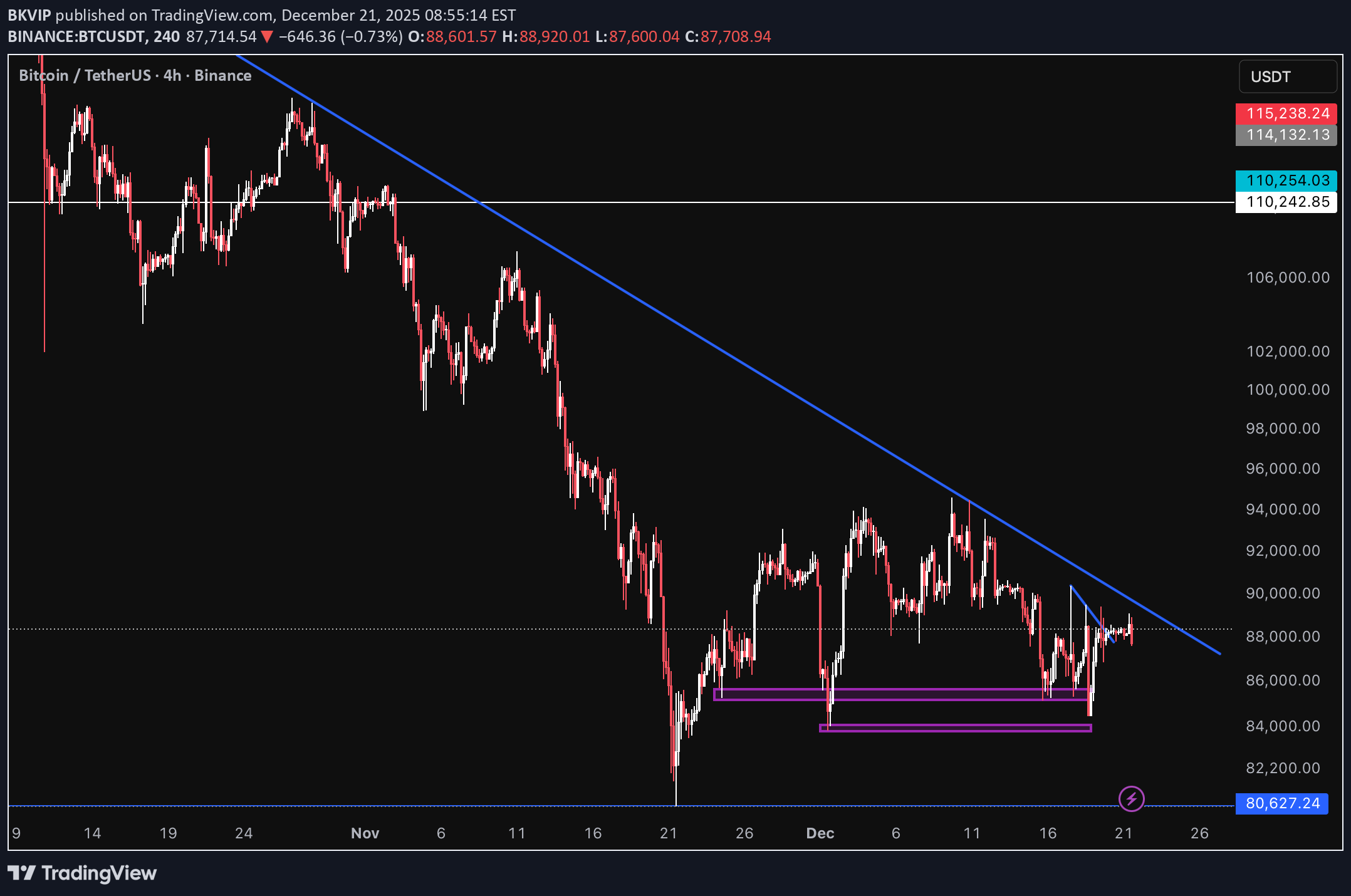
Bitcoin, daha geniş düzeltme aşamasında fiyatı sürekli olarak reddeden bir çapraz olan, uzun vadeli haftalık azalan bir direnç altında kalmayı sürdürüyor. Bu seviyeyle her etkileşim, daha düşük bir devamla sonuçlandı ve bu seviyenin basit bir gün içi trend çizgisi yerine daha yüksek zaman diliminde önemli bir arz bölgesi olduğunu doğruladı. Mevcut yapı, bu haftalık çapraz direnç ile aşağıda iyi tanımlanmış bir talep bölgesi arasında fiyat sıkışmasını gösteriyor. Alıcılar satış baskısını absorbe ederek ve düşüşlerin devamını önleyerek aynı alt aralığı defalarca savunurken, satıcılar çaprazda yukarı yönlü tavan yapmaya devam ediyor. Bu, klasik bir sıkıştırma ve enerji birikimi senaryosu yaratır. Talebin tepkisi net ve dürtüsel oldu ancak fiyatlar haftalık dirence yaklaştıkça yukarı yönlü hareket zayıflıyor. Bu davranış, inanç odaklı trendin devamından ziyade konumlandırma ve likidite savaşlarını akla getiriyor. Kararlı bir çözüm, ya haftalık köşegenin üzerinde bir kabulü ya da savunulan talep alanının sürdürülememesini gerektirecektir. Çözüm gerçekleşene kadar Bitcoin, sabrın ve onaylamanın beklentiden daha önemli olduğu, yüksek sürtünmeli bir bölgede kalır. Haftalık yapı öncülük eder. Daha düşük zaman dilimleri tepki verir. Yapı riski tanımlar. Likidite sonucu tanımlar.
Dionisis
TOP G trade

Bu takas yalnızca TOP G içindir. Agresif ol ya da evine git. Hepsi bu. Goldman Sachs'ın CEO'su
#BTCUSD Next Possible Move
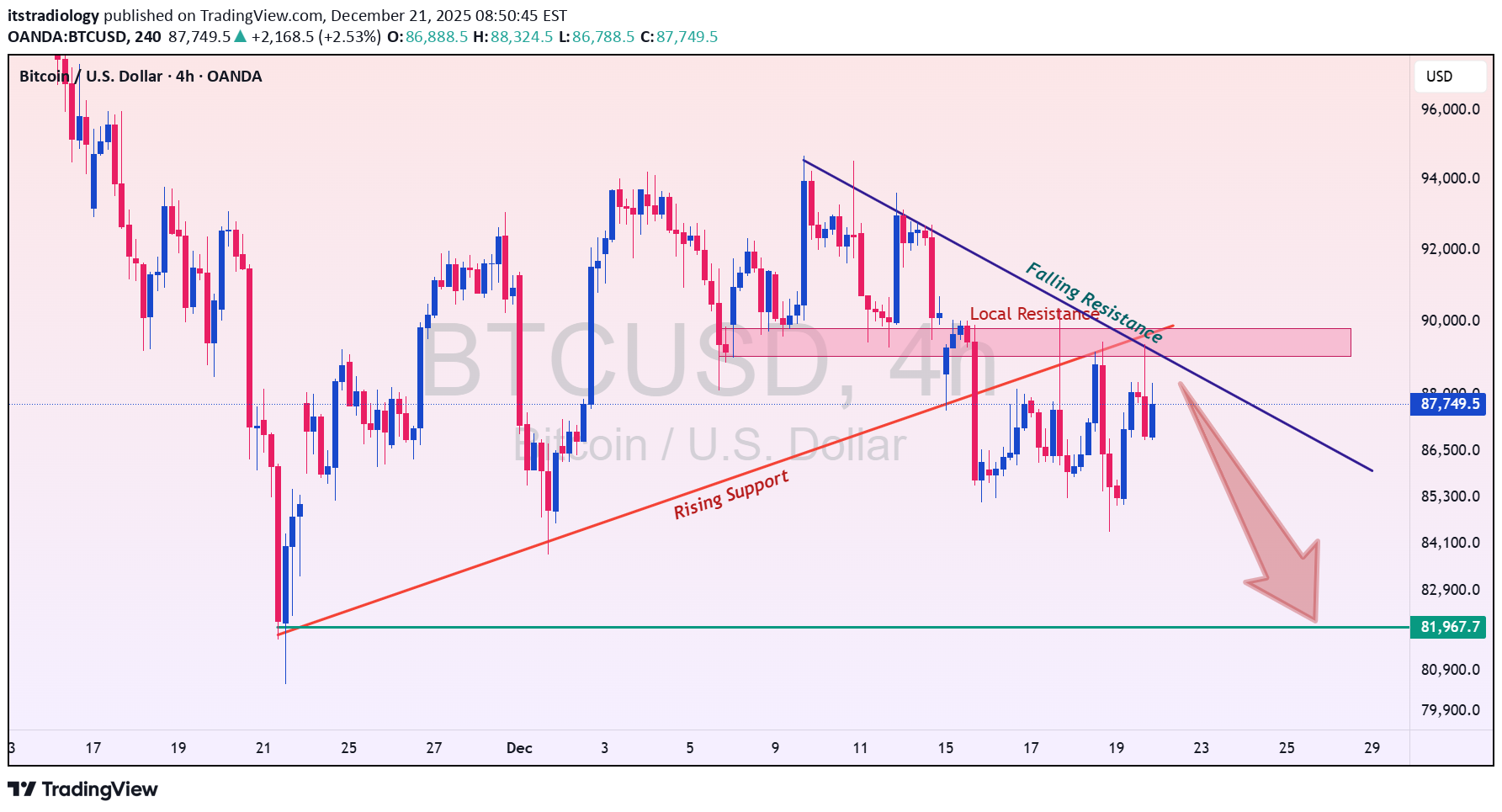
#BTCUSD Sonraki Olası Move vxcvzvxvxvxcvxzvxcvxcvxvzxvxvzxvxcvxc

WeTradeWAVES
BTCUSD Stabilises After Volatile Swing as Market Rebuilds Struct
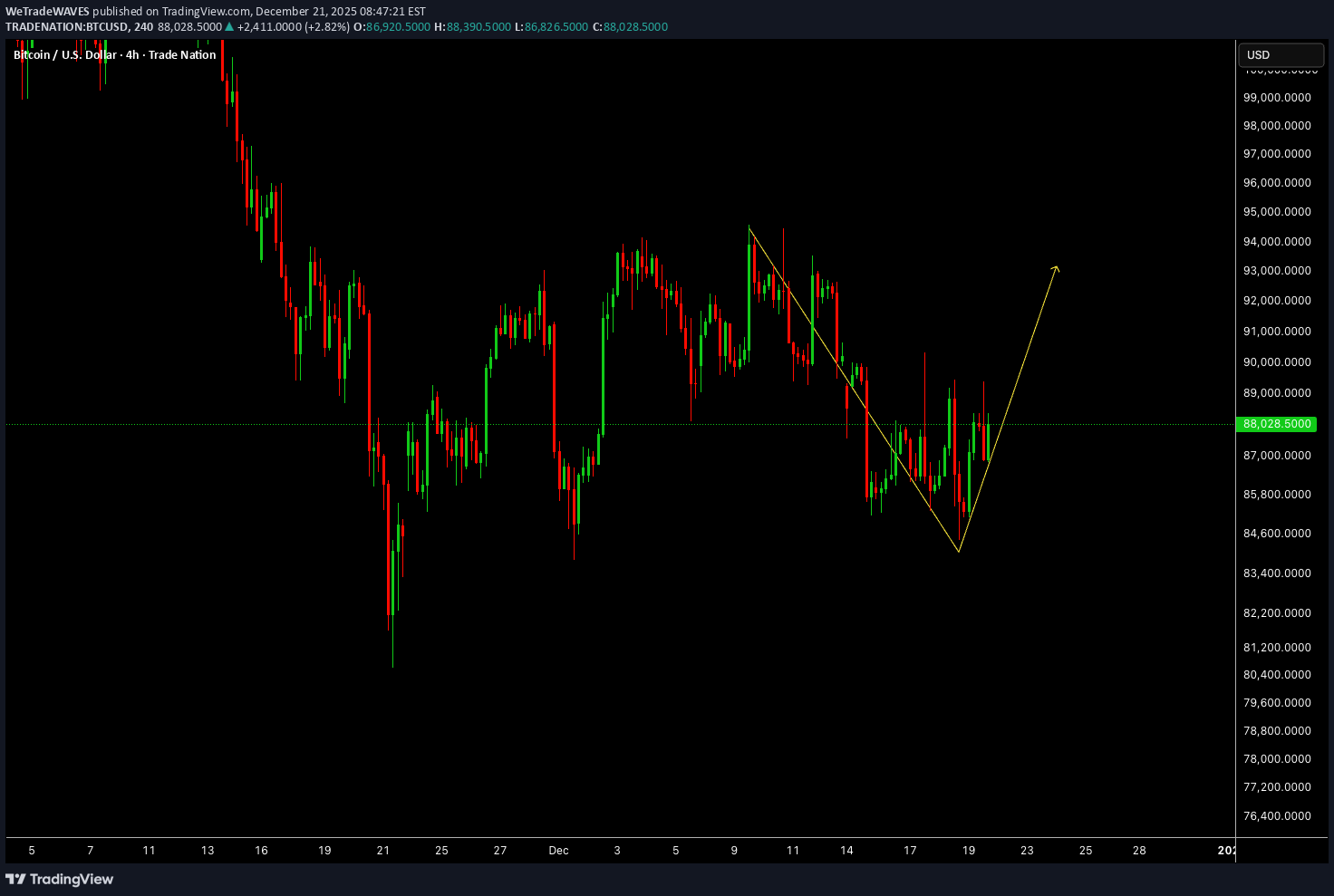
Bitcoin keskin bir hareketin ardından kısa vadeli istikrar işaretleri gösteriyor ve fiyat hareketi 4 saatlik zaman diliminde yeniden düzenlenmeye başlıyor. Son zamanlardaki oynaklık absorbe edildi ve piyasa artık düz bir çizgide ilerlemek yerine yeniden değerlendirme aşamasına geçiyor gibi görünüyor. Momentum aktif olmaya devam ediyor ancak yatırımcılar bir sonraki yön aşamasının daha net onaylanmasını beklerken katılım daha seçici görünüyor. Bu konsolidasyon dönemi genellikle bir sonraki anlamlı genişlemenin şekillenmeye başladığı dönemdir. Açıklama: Trade Nation'ın Etkileyici programının bir parçasıyız ve analizlerimizde TradingView grafiklerini kullanmak için aylık bir ücret alıyoruz.
BTCUSD - 30M - Bullish Recovery After Sell-Side Liquidity Sweep
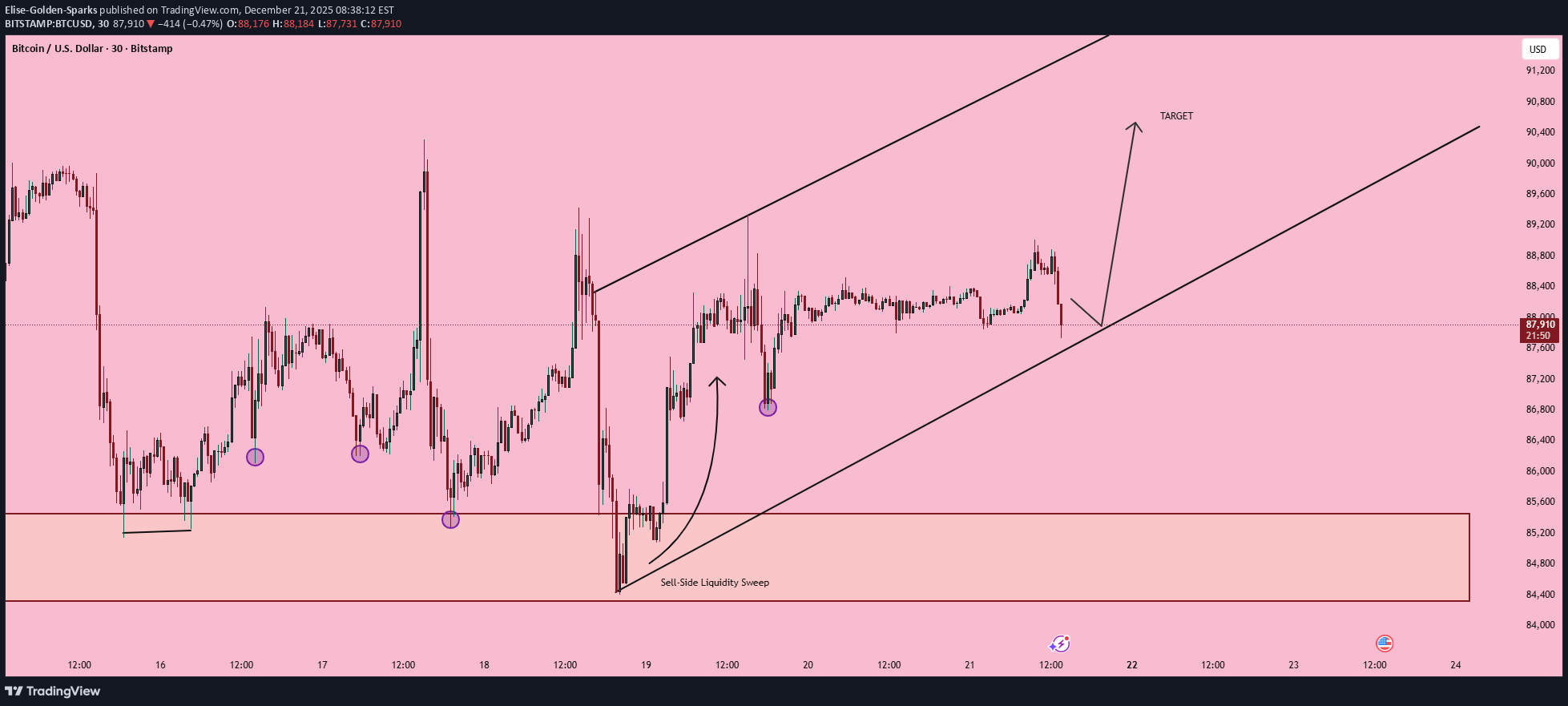
BTCUSD Önceki düşük seviyelerin altındaki agresif satışlar, trendin tersine dönmesi değil, bir likidite baskınıydı. Alıcılar net bir değişimle karşılık verdi ve ardından 87.800-88.000'in üzerinde kontrollü konsolidasyon geldi. Bu davranış, dağıtımdan ziyade emilim ve yeniden birikimin sinyalini verir. Fiyat geri kazanılan yapının üzerinde kalırken momentum yapıcı kalmayı sürdürüyor. Temel Senaryolar ✅ Boğa Durumu 🚀 87.800-88.000 seviyesinin üzerinde tutunmak yukarı yönlü hareketin aşağıdakilere doğru devam etmesini sağlıyor: 🎯 89.600 🎯 90.400 🎯 91.200 ❌ Ayı Durumu 📉 (Geçersiz Kılma) 87.500'ün altındaki başarısızlık yapıyı zayıflatır ve aşağıdakilere doğru bir move dönüşü açar: 🎯 86.200 🎯 85.200 (Major Talep Bölgesi) İzlenecek Mevcut Seviyeler Direnç 🔴: 89.600 → 90.400 → 91.200 Destek 🟢: 88.000 → 87.500 → 85.200 ⚠️ Yasal Uyarı: Bu analiz yalnızca eğitim amaçlıdır. Mali tavsiye değil.

Miss_Golden_Pips
BTCUSD – Watching Resistance Reaction After Channel Break
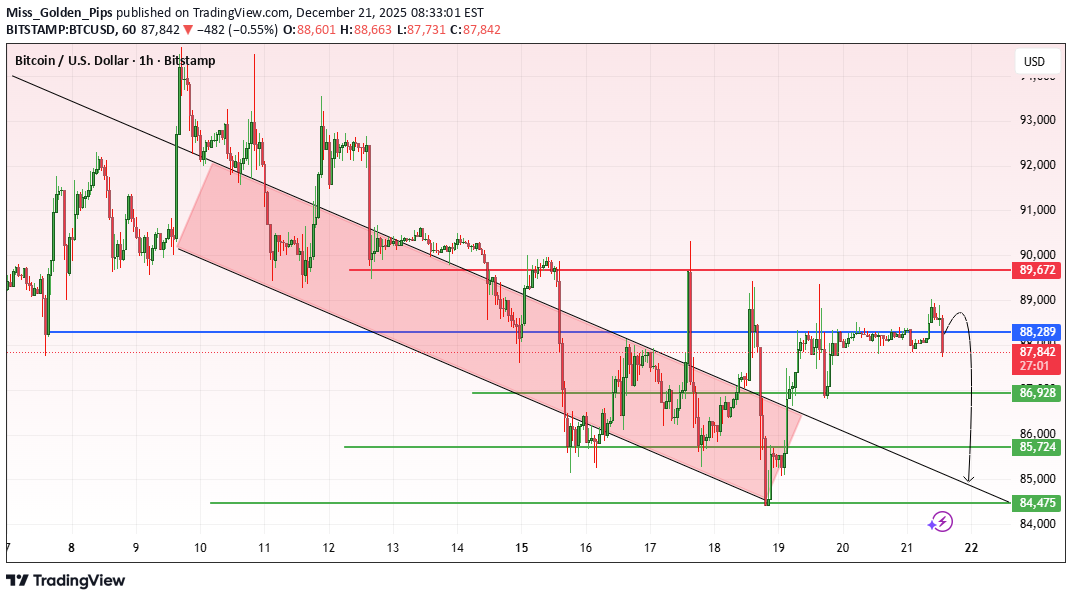
Bitcoin şu anda önceki yapısal dönüm noktalarına uygun olarak 88.289 ile 89.672 arasındaki önemli direnç alanını yeniden test ediyor. Düşen kanalın kırılmasının ardından fiyat bu bölgeye geri döndü; burada momentumun zayıflayıp zayıflamadığını veya alıcıların kontrolü elinde tutup tutmadığını gözlemliyorum. Fiyat bu bölgede reddedilirse bir sonraki ilgi alanları şunlar olacaktır: 86.928 85.724 84.475 Bu seviyeler, geçmişte reaksiyonların meydana geldiği önceki talebi ve yapısal destekleri temsil etmektedir. 89.672'nin üzerinde bir move bu düşüş senaryosunu zorlayabilir ve yapının yeniden değişmekte olduğunu gösterebilir. Bu sadece mevcut piyasa davranışına ilişkin kişisel analizimdir YASAL UYARI: finansal tavsiye veya ticaret sinyali değildir.
BTC USDT Weekly First 77000$ and then 110000$ ? Technical Anal

Sorumluluk Reddi
Sahmeto'nun web sitesinde ve resmi iletişim kanallarında yer alan herhangi bir içerik ve materyal, kişisel görüşlerin ve analizlerin bir derlemesidir ve bağlayıcı değildir. Borsa ve kripto para piyasasına alım, satım, giriş veya çıkış için herhangi bir tavsiye oluşturmazlar. Ayrıca, web sitesinde ve kanallarda yer alan tüm haberler ve analizler, yalnızca resmi ve gayri resmi yerli ve yabancı kaynaklardan yeniden yayınlanan bilgilerdir ve söz konusu içeriğin kullanıcılarının materyallerin orijinalliğini ve doğruluğunu takip etmekten ve sağlamaktan sorumlu olduğu açıktır. Bu nedenle, sorumluluk reddedilirken, sermaye piyasası ve kripto para piyasasındaki herhangi bir karar verme, eylem ve olası kar ve zarar sorumluluğunun yatırımcıya ait olduğu beyan edilir.
